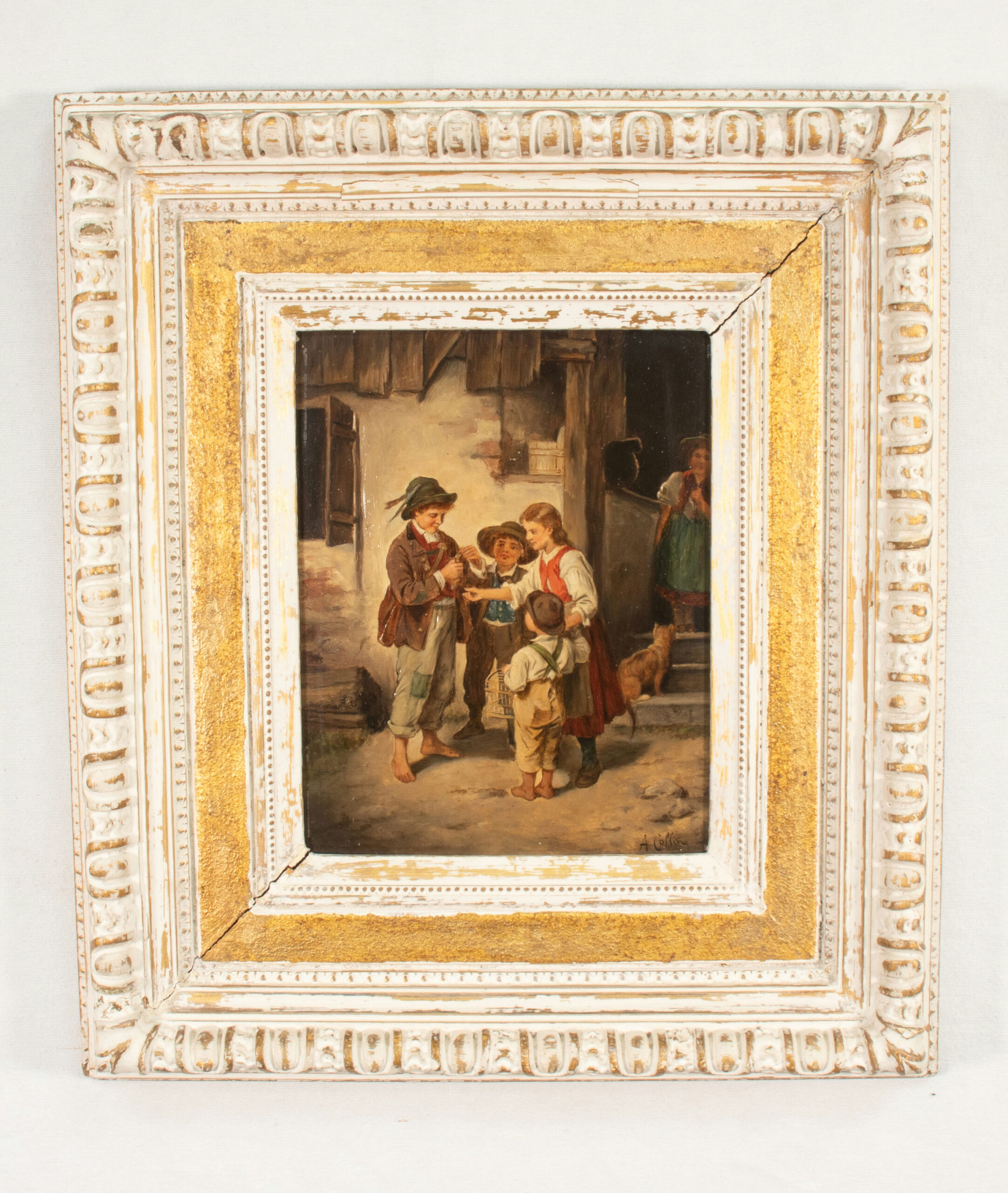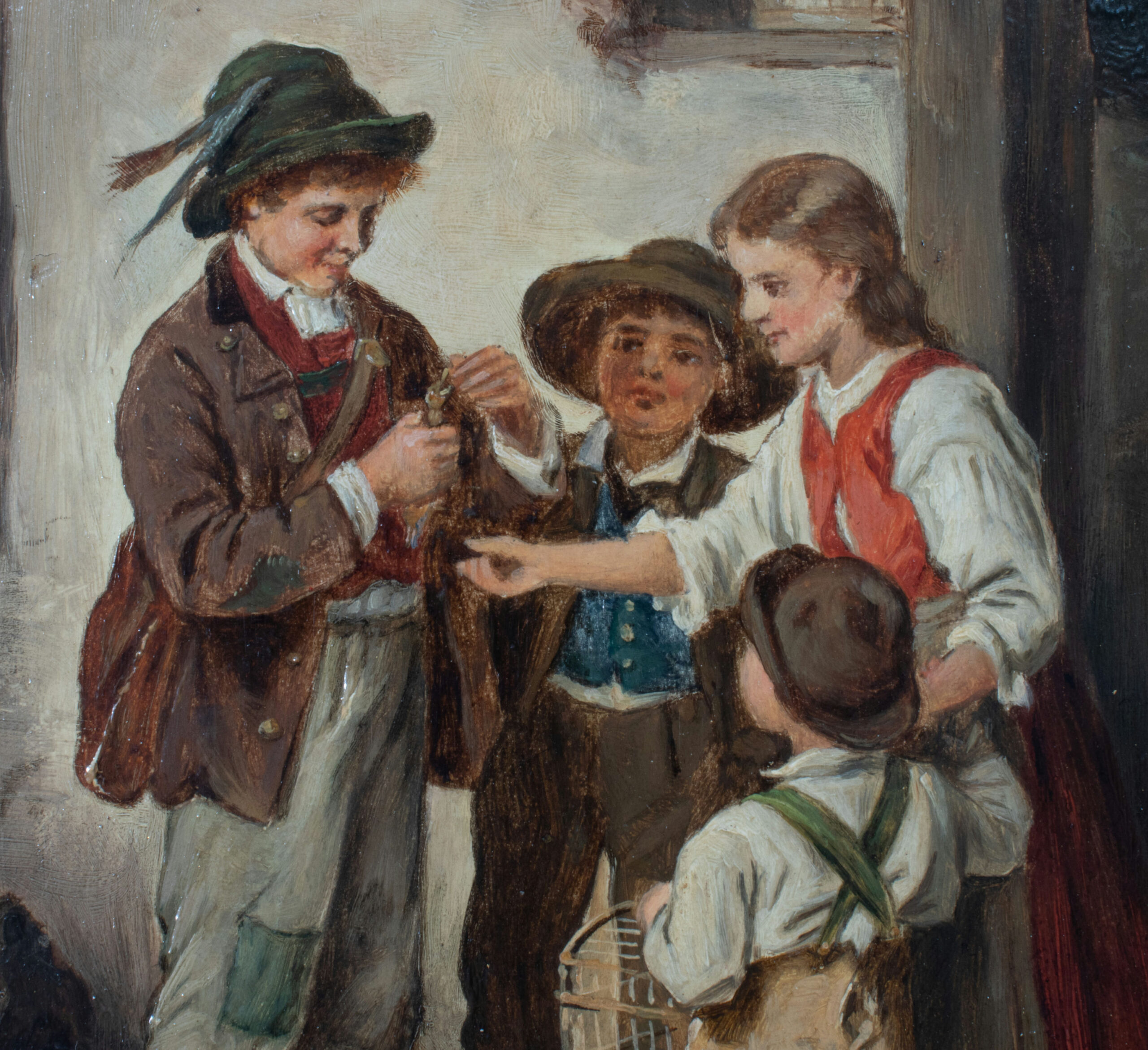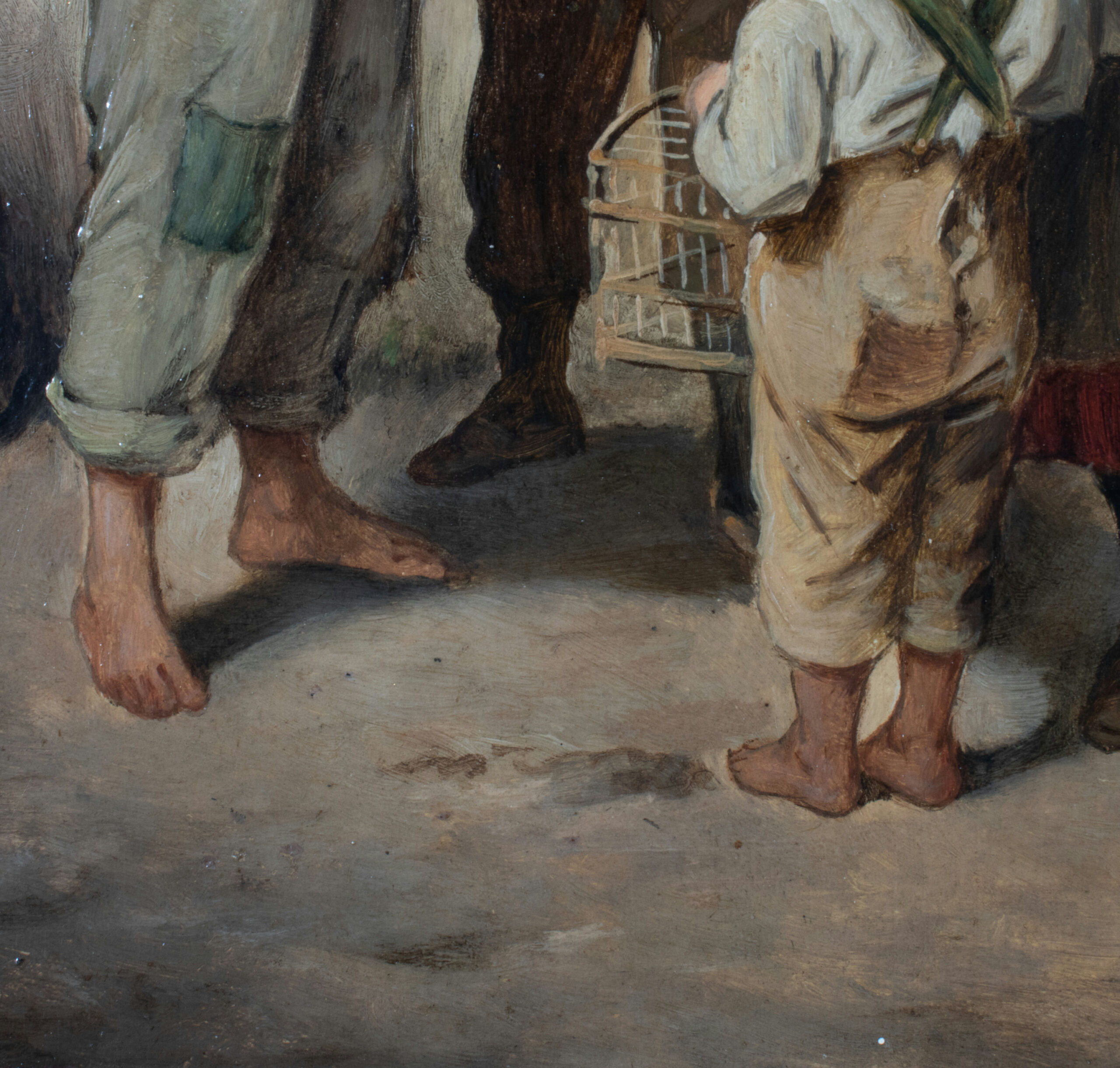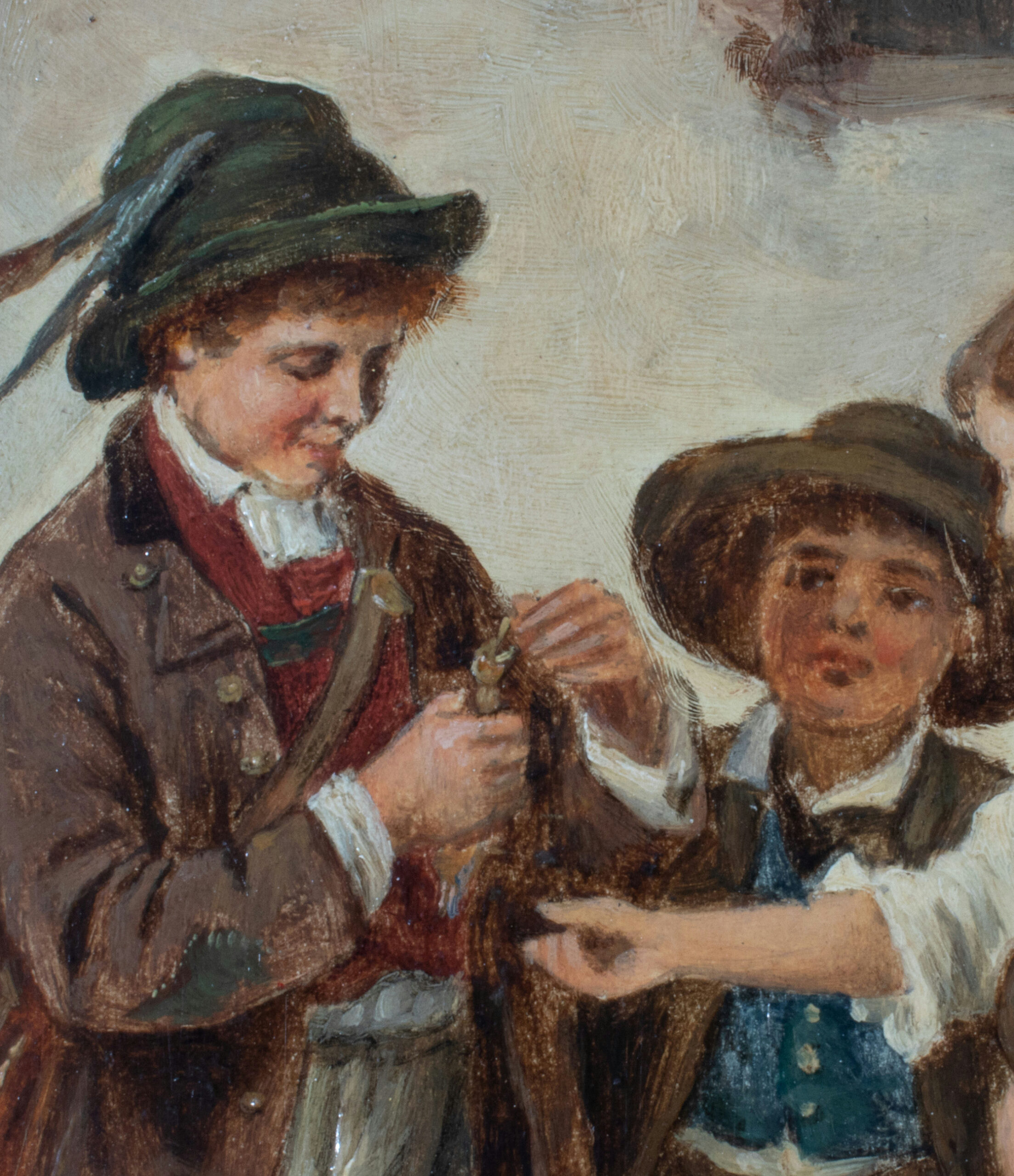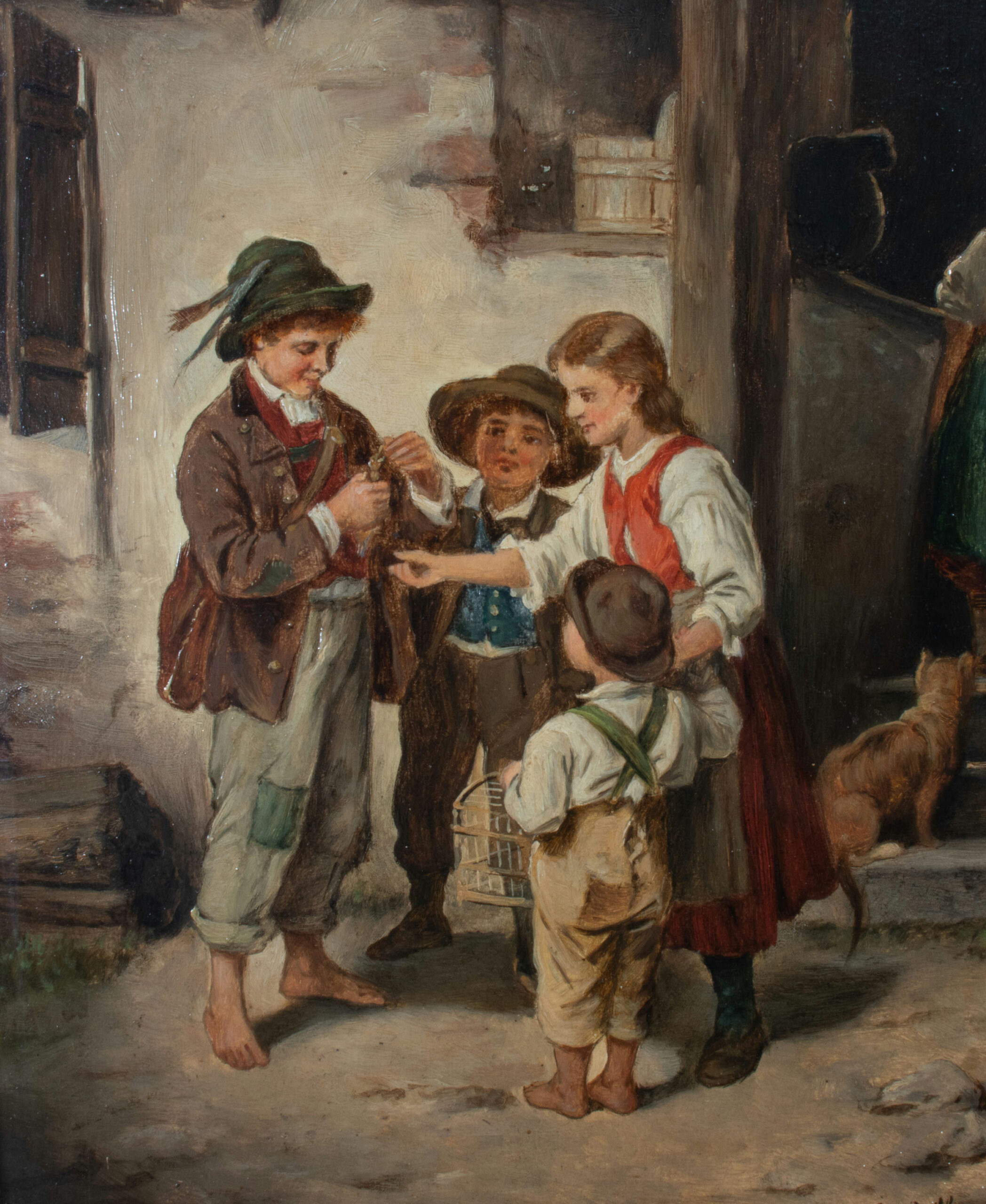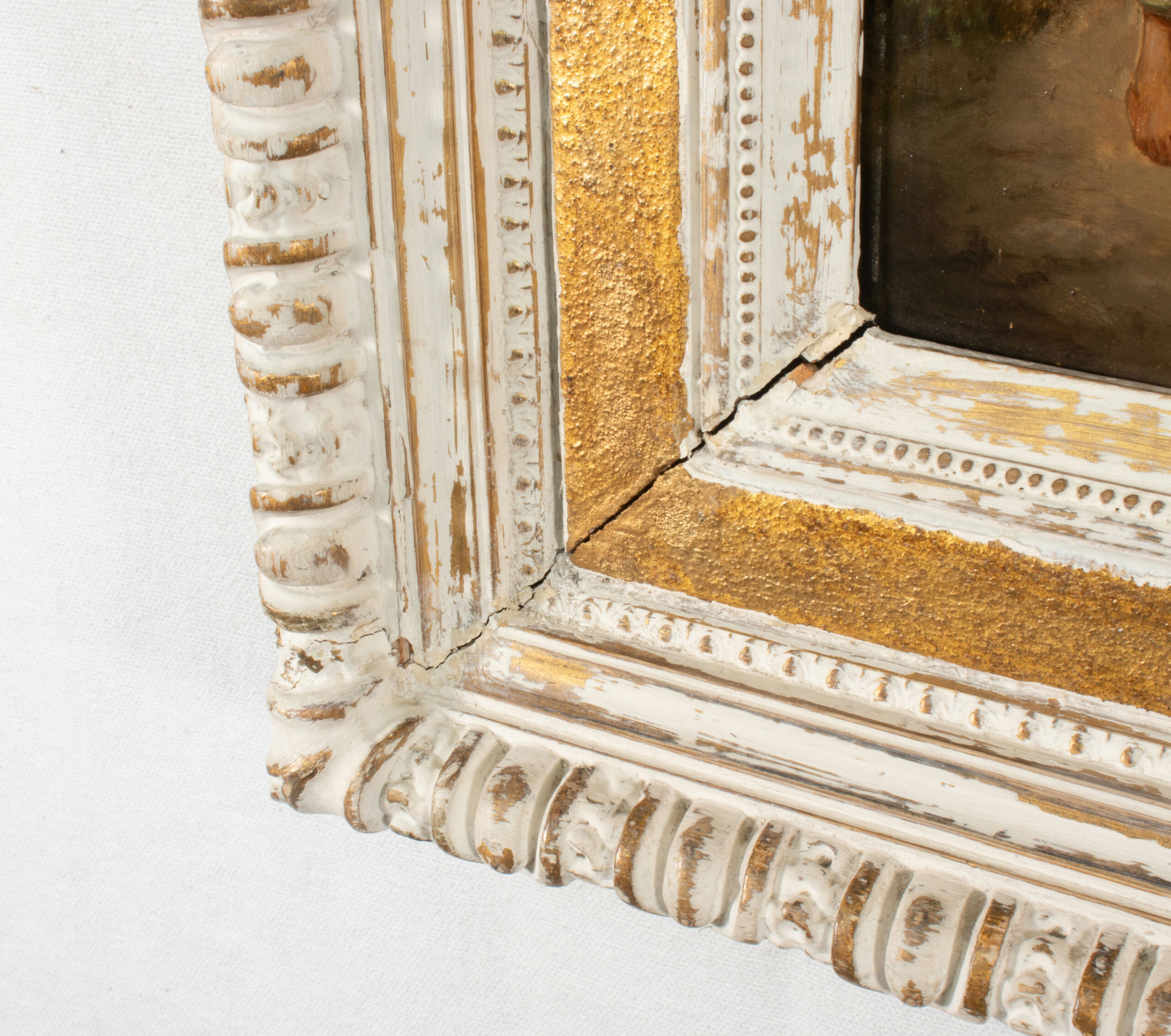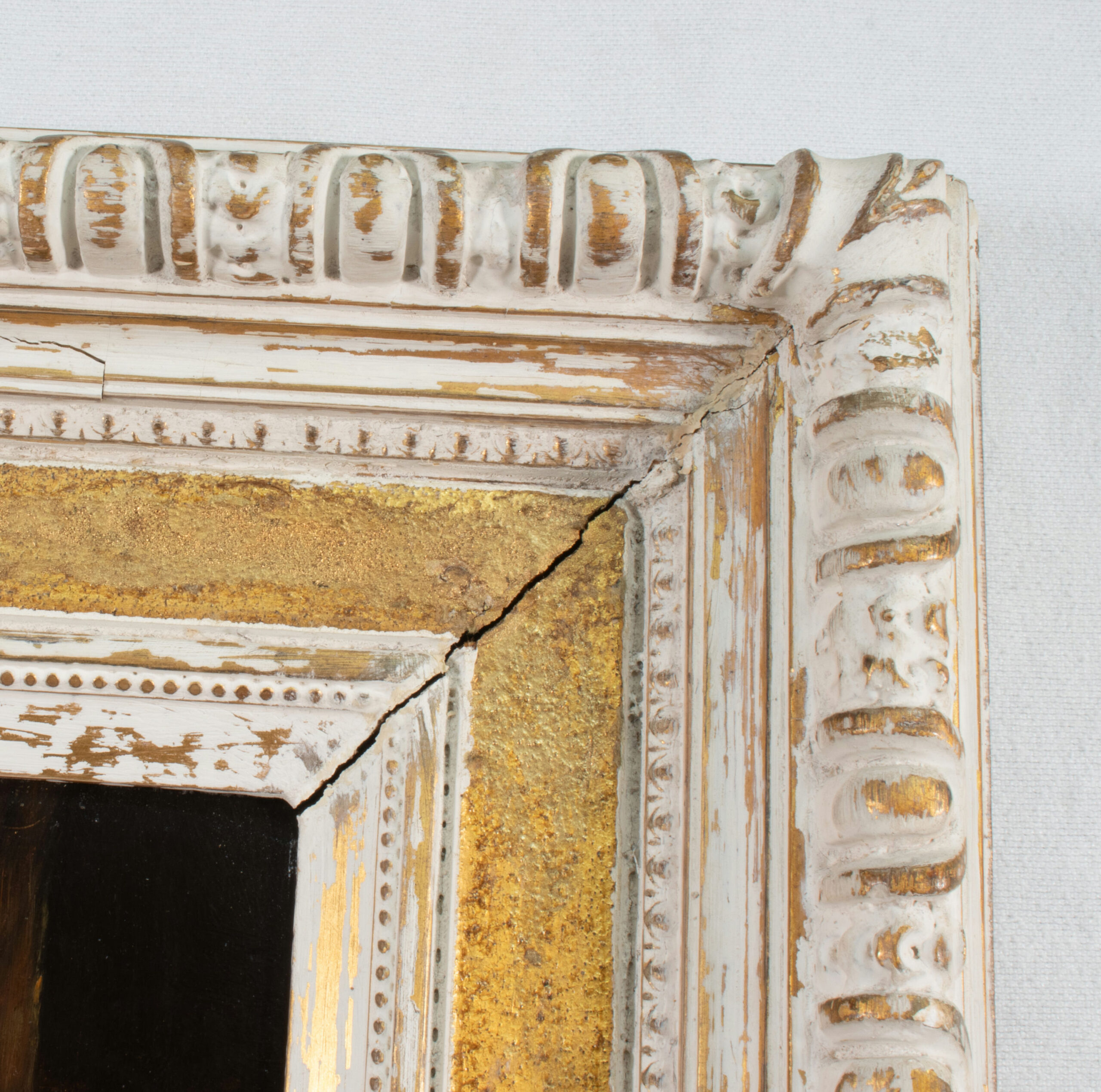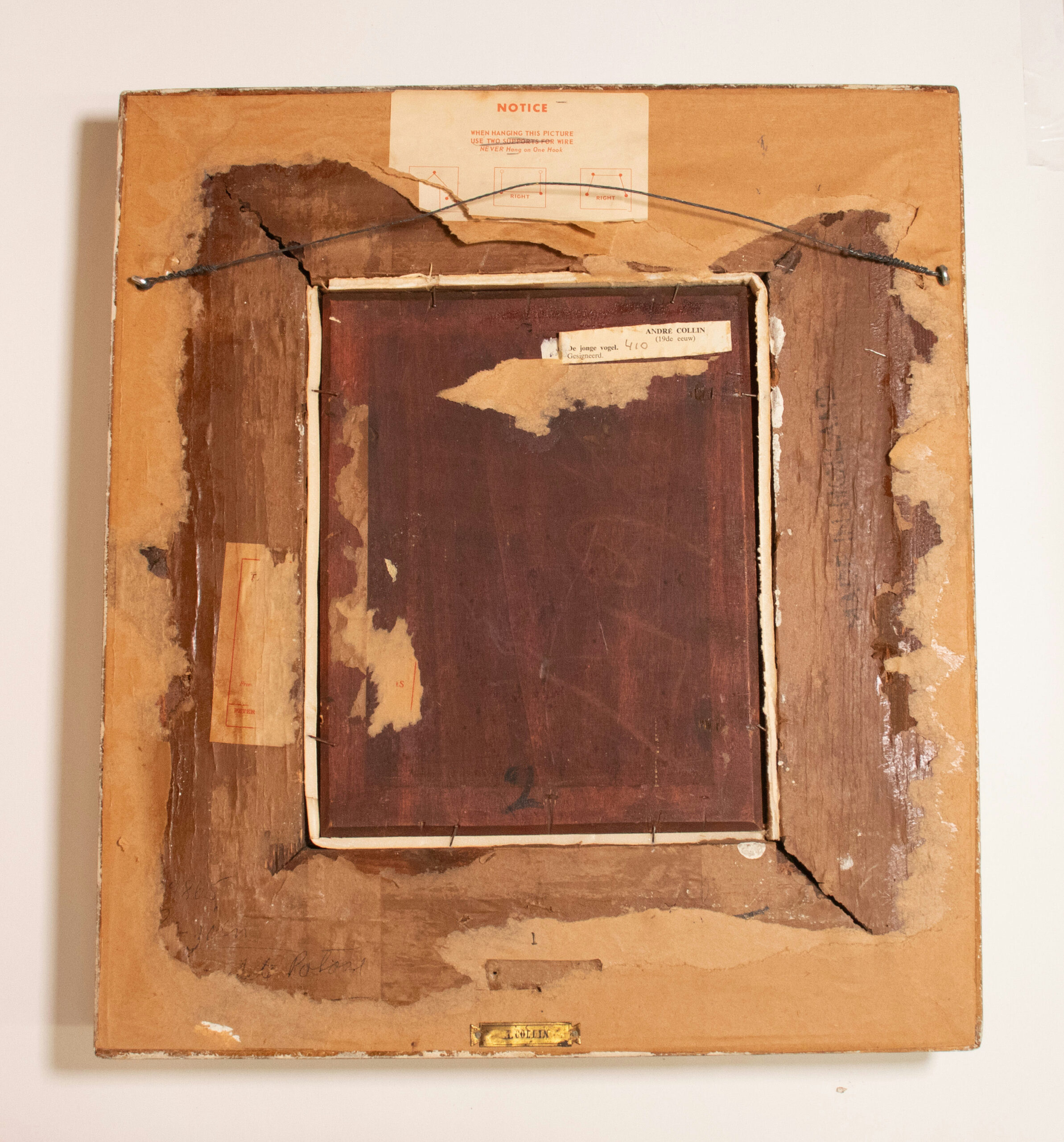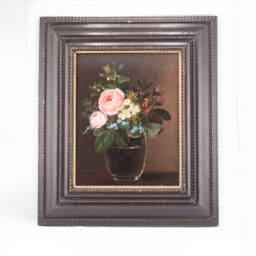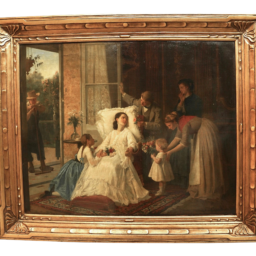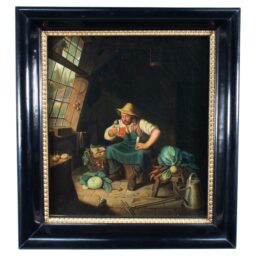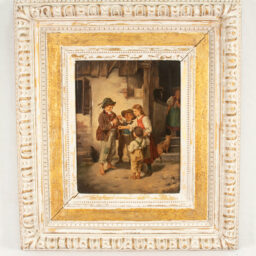Description
This charming turn-of-the-century oil painting on a wooden panel by André Collin depicts a group of four children gathered at the foot of stairs, feeding a young bird. In a masterful use of light and shadow, another young girl peeks out from a darkened stoop entryway alongside a sitting cat. The youngest boy holds a small birdcage, while the eldest tries to tend to the bird in his hand. The scene unfolds in a modest homestead, characterized by exposed brick and old wooden structures, typical of traditional genre scenes. The painting is housed in a white and gold frame and signed “A. Collin” in the lower right corner.
André Collin (1862-1930) was a Belgian painter active during the modern period. He trained at the Academy of Fine Arts in Brussels under Jean-François Portaels and later in Paris at the Lefèbvre studio. Collin regularly exhibited in the Brussels gallery scene and was renowned for his beautiful landscapes and interior scenes. His later works, such as this one, often depicted genre scenes and intimate portrayals of everyday life.
This painting is a faithful reproduction of a piece dated 1810 by the German painter Friedrich Wilhelm Schön (1810-1868). Schön, a genre painter and lithographer of the Biedermeier period, graduated from the Munich Academy of Art and was associated with the Munich School.
Numerous copies of the original painting by various artists have been sold at auction, each introducing artistic liberties and stylistic variations. This particular copy employs a looser paint technique than the original, highlighting the tactile nature of the oils. Unlike the original, which utilized ‘chiaroscuro’—a technique that uses contrasting lights and darks to create bold dramatic effects—Collin’s version opts for a lighter approach with the absence of true blacks in the shadows, imparting a playful modern charm compared to the controlled Dutch techniques of the original.
This painting is a tender snapshot of daily life and would be a delightful addition to a home office, living room, or kitchen.
The frame is also noteworthy, crafted from wood and gesso with gold gilt and white pigment. It is a Salvator Rosa style frame—a style named after the 17th-century painter, though not connected with him. This type of frame is characterized by a hollow section that guides the viewer’s eye into the picture, featuring a wide central hollow (scotia), raised convex outer and inner sight edges, and ogee molding. It includes an egg and dart trim on the top edge and two beaded trims within concentric narrowed center planes.
This painting is a tender snapshot of daily life and would be a delightful addition to a home office, living room, or kitchen.
With Frame: H=19 in. W= 16.5 in. D= 2.5 in. 10 lbs.
Panel: H=9.5 in. W=7.5 in.

